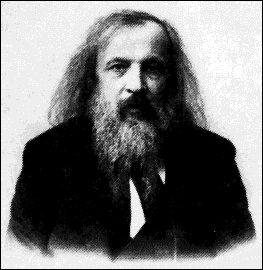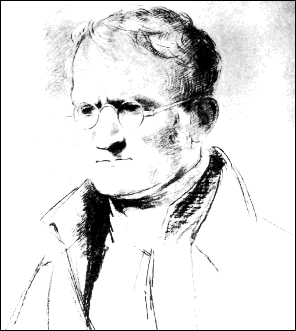
19th
century
The 1800s produced order and a vital understanding of proportions and standards in chemistry. The most significant of these was the idea of the periodic table, the universal classification method of the elements.

Dmitri
Ivanovich Mendeleev (1837-1907) (see left) generally has the credit for this,
following the work of many previous European chemists – Döbereiner
(1780-1849), Kekule von Stradonitz (1829-1886), Cannizzaro (1826-1910), Newlands
(1837-1898) and Meyer (1830-1895).
Mendeleev: image reproduced from http://dbhs.wvusd.k12.ca.us/gallery/html
"Once
there lived and existed a great learned man with a beard almost as
By the end of the century
much work had been put into developing the observation that compounds contained
specific proportions of the elements of which they were composed.
This led to the ‘Law of definite Proportion’ and later the ‘Law of
Multiple Proportions’ by Joseph Louis Proust (1754-1826) and John Dalton
(1766-1844) (see below) respectively. This was
of great mathematical significance in the world of chemistry.

The late 1800s also marked
the development by John Dalton of Avagadro’s Hypothesis, the idea that
balanced equations were necessary to produce a certain amount of products from a
certain amount of reactants.
Dalton: image reproduced from http://dbhs.wvusd.k12.ca.us/gallery/html
Another important development of the century was in the field of electrochemistry, particularly by Michael Faraday (1791-1867), who defined electrolysis, electrolyte, electrode, anode, cathode, anion and cation, and who identified the concept of an electron, and who independently proposed the first and second Laws of Electrolysis. This paved the way for future electrochemists.
Back to home page